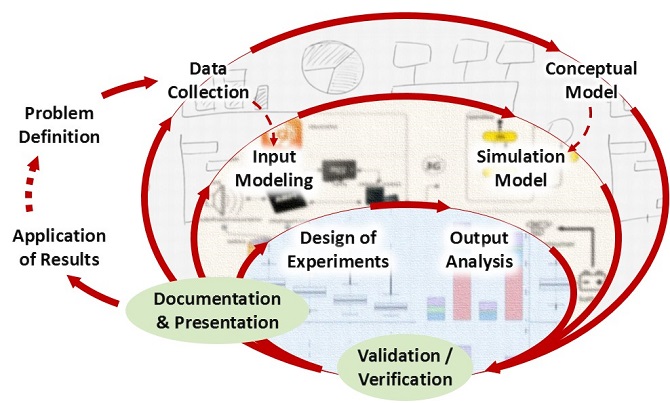Simulation and Modeling 1 (WS 2021/22)

Details
| Type of Course | Lecture (2 SWS) + Exercise (2 SWS) |
| ECTS Credits | 2,5 + 2,5 |
| Language | English |
| Lecture | Tuesday, 6:15 – 7:45 pm, room H4 UnivIS , online if necessary |
| Exercises |
Monday, 12:00 am – 2:00 pm, room 01.153-113 CIP UnivIS , online if necessary Monday, 2:00 pm – 4:00 pm, room 01.153-113 CIP UnivIS , online if necessary Monday, 4:00 pm – 6:00 pm, room 01.153-113 CIP UnivIS , online if necessary Registration for the Exercises via StudOn opens after the first lecture |
Lecture
Overview of the various kinds of simulation, discrete simulation (computational concepts, simulation of queuing systems, simulation in Java, professional simulation tools), required probability concepts and statistics, modeling paradigms (e.g., event/process-oriented, queuing systems, Petri nets, UML statecharts), input modeling (selecting input probability distributions), random number generation (linear congruential generators and variants, generating random variates), output analysis (warm-up period detection, independent replications, result presentation), continuous and hybrid simulation (differential equations, numerical solution, hybrid statecharts), simulation software, case studies, parallel and distributed simulation.
Exercise
Calculation of expected values with the aid of probability theory, determination of confidence intervals, creation of simulation models using AnyLogic, hybrid modeling with statecharts, data collection and distribution fitting with ExpertFit.
Organizational Matters
When questions arise, the teaching assistant may be asked directly or via the message board in StudOn.